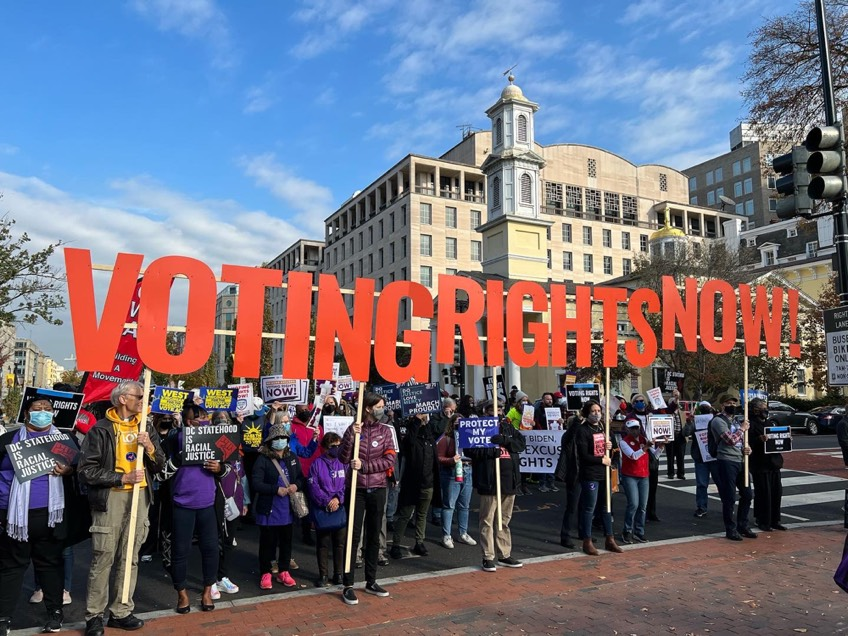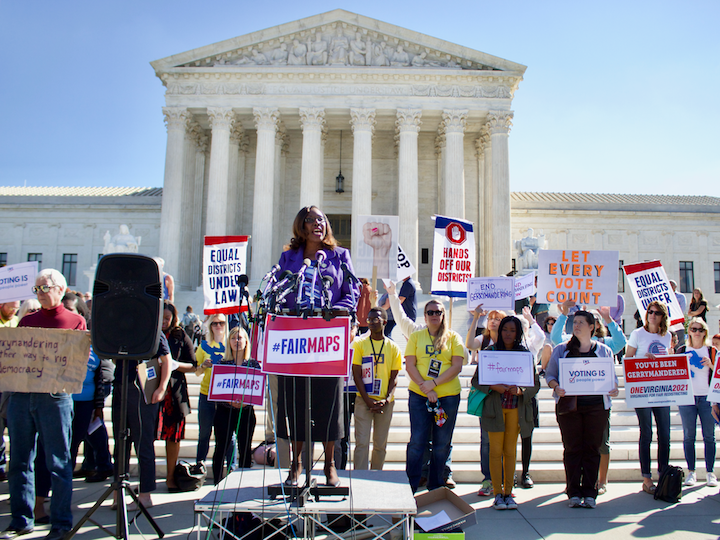This blog was written by former legal intern Joseph DeMartin.
This past summer, voting rights advocates waited on the edge of their seats for the US Supreme Court’s decision in its most significant election law case of the October 2024 term, Louisiana v. Callais.
Would Louisiana’s map with two majority-Black districts remain in place? Or would the Court declare that drawing the map was racial discrimination and decide in favor of the so-called “non-African-American” voters instead? If the latter, they would scrap the map, sending Louisiana back to the drawing board and leaving Louisiana voters to continue fighting for equitable maps.
After weeks of waiting, the last day of the term came and went without a Callais opinion. Instead, the Court decided to take the rare step of listing the case for “reargument” in the Fall 2025 term. Basically, the Supreme Court ordered a redo of the argument, but this time, the Justices had a specific question they wanted the parties to address the next term.
Louisiana v. Callais, Section 2 of the VRA, and the Fourteenth Amendment
Two months after the last day of the 2024 term, on a Friday evening in August, the Justices announced the additional question they had for the parties in Callais. The bottom line is that the Court intends to put the constitutionality of Section 2 of the Voting Rights Act (VRA) on the line.
,

,
Let’s break down exactly what the Supreme Court is asking. Remember that Callais is essentially a showdown between two legal claims: racial vote dilution in violation of Section 2 of the VRA versus racial gerrymandering in violation of the Fourteenth Amendment. (If you need a refresher on the difference between these two claims, read my first blog on Louisiana v. Callais).
Section 2 of the VRA prohibits a state from implementing any election practice or procedure — including drawing district lines — that dilutes or denies a person’s fundamental right to vote due to their race or color. The Fourteenth Amendment’s prohibition on racial gerrymandering prevents states from using race as the primary factor when drawing district lines unless they have a compelling interest in doing so. Historically, under US Supreme Court precedent, jurisdictions could justify drawing districts with a majority of voters of color as part of complying with Section 2 of the VRA. If done in good faith, this typically satisfied the “compelling interest” test under the Fourteenth Amendment.
,
,
While the Court doesn’t specifically mention Section 2 or the VRA, its intent in this rehearing is clear. The Court is asking if a state drawing a majority-community of color district under Section 2 (“the intentional creation of a second majority-minority congressional district”) is still allowed under the Fourteenth and Fifteenth Amendments. In other words, is complying with Section 2 of the VRA still a compelling interest?
As recently as June of 2023, in the case Merrill v. Milligan, the answer to that question was “yes.” The Court faithfully applied its precedent, stating that complying with Section 2 was a compelling enough interest to justify using race to draw district lines. Now, a mere two years later, the Court is reopening the debate on Section 2 — a warning that one of voting rights advocates’ most powerful tools to protect the political power of voters of color might soon be destroyed by this Court.
Recent Attacks on the Voting Rights Act
The VRA is one of the most effective pieces of legislation in American history. The Roberts Court has steadily eviscerated it.
,

,
In Shelby County v. Holder, where the Supreme Court ripped out a key provision of the VRA, Chief Justice Roberts tried to assure voting rights advocates that the “decision in no way affects the permanent, nationwide ban on racial discrimination in voting found in [Section] 2.” The Court went on to weaken part of Section 2 in its 2021 decision in Brnovich. Now, the Roberts Court seems poised to fully destroy Section 2.
A decision that declares Section 2 unconstitutional would be an act of direct destruction against America’s developing multi-racial democracy. In the redistricting context, Section 2 not only impacts how we draw congressional districts but also ensures that voters of color have the opportunity to elect state legislators, city council members, county commissioners, local judges, school board members, and more, of their choice. Gutting Section 2 will severely limit the ability of communities of color to elect candidates of choice, make it much harder for people of color to become elected officials, and further diminish representative democracy.
The Supreme Court will be hearing the re-argument on Wednesday, October 15. If you live near DC or have the capacity, exercise your First Amendment rights and advocate outside of the courthouse for the importance of the VRA. You can also tune into the fair maps rally at the feet of the Supreme Court via livestream.
Share this blog and other LWV resources to inform your family and friends about the incoming threat to multi-racial democracy and racial justice. You can also do your part by joining the League of Women Voters in the fight for fair maps.
,
To find a League near you, search our 750+ state and local Leagues.
,
Stay tuned to the League of Women Voters as we await a ruling on this critical case and join our movement to Unite and Rise. The power of the people to fight for our democracy has never been more critical!